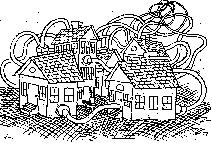Michael Fumento
Factual · Powerful · Original · Iconoclastic
Time to Overthrow the Radonistas
January 01, 1998 · Michael Fumento · Investor’s Business Daily · EpaLions and tigers and BEIRs, oh my! Specifically, BEIR VI, which stands for the Board on the Effects of Ionizing Radiation, No. 6. It also stands for the latest effort to bilk homeowners out of over $10 billion in the jihad against household radon, a radioactive gas which probably harms no one at the household level.
The report was issued in February by the National Research Council, an arm of the National Academy of Sciences, and co-funded by the Environmental Protection Agency. Chaired by Johns Hopkins University professor Jonathan Samet, BEIR VI claims radon that seeps up naturally into homes causes roughly 21,800 lung cancer deaths every year in America, with as many as 30,000.
Radon, said Samet, "poses an important public health risk and it should be recognized as such."
Samet and his fellow Radonistas have been pushing this line for a decade, so they’re not suddenly going to admit they’re wrong. But they did include a sentence in the inch-thick report that said MAYBE, just maybe, they’re not right.
"Although a linear-nonthreshold model was selected," the report said, "the committee recognized that a threshold, that is a level of exposure with no added risk, could exist and not be identifiable from the available epidemiological data."
Translation: Their conclusion simply assumes that if massive amounts of radon can kill, so can an amount so tiny that an amoeba would trip over it in the dark.

Nobody questions that uranium miners breathing huge amounts of radon suffer extraordinary rates of lung cancer. But we also know that the body has multi-layered defenses for throwing off minor assaults. A small amount of cyanide or arsenic is harmless, but more can kill. A small amount of iron is necessary for your health; absorb too much and you’ll die.
Rather than simply extrapolating from miner data, many studies have compared high-radon households with low-radon ones. With few exceptions, these studies have shown that persons living in high-radon homes have no more lung cancers or even significantly fewer ones than those in low-radon ones.
Yet the NRC, EPA and Radonistas in general gloss over these studies. Neither the BEIR VI executive summary nor the public summary devote a single word to them.
The Radonistas claim that none of the other studies, no matter how extensive, are big enough to prove beyond doubt there’s no risk from household radon. Strictly speaking, that may be true. But they can establish that any possible risk is negligible.
The largest household study to date, from Finland, concluded: "Our results suggest no important public health impact for indoor radon exposure." The wording is virtually the opposite of Samet’s.
Further, the household studies certainly provide no support for the linear, nonthreshold theory.
That could explain why Finland and Canada have set their abatement levels—those at which radon should be reduced—roughly five times as high as the EPA’s. Even safety-obsessed Sweden (not for nothing the makers of the Volvo) allows more than twice as much household radon as the EPA.
BEIR VI admits that radon probably only causes about 2,900 deaths among American non-smokers each year. Even if the EPA’s advice were followed, only 1,000 of those deaths would be prevented—out of 160,000 annual lung cancer deaths.
But the radon jihad may impose terrific costs. If you take BEIR VI’s estimate of how many homes would need abatement and multiply it by the average cost of abatement calculated in a 1990 article co-authored by an EPA official, then testing for excess radon and getting rid of it would cost $13 billion in today’s dollars. Add to that $250 million a year for operation and maintenance of the abatement equipment.
Yet even those who’ve studied the miners, such as Gino Saccomanno, M.D. of St. Mary’s Hospital in Grand Junction, Colo., question whether anything shy of massive radon exposure can kill.
Saccomanno has studied uranium miner disease for 40 years, and has by far the largest miner database in the country. Yet he says he hasn’t found a single case of lung cancer among non-smoking miners who breathe in what the EPA considers "dangerous" levels of radon for 400 years to get that kind of exposure.
"I hate to see the public get taken like this," says an exasperated Saccomanno. Officially, the Radonistas take note of his work. But for all intents and purposes, he says Samet and the others simply ignore his data.
New York University physicist and radon expert Naomi Harley, M.D., can’t say for sure whether there is a threshold effect for radon. But she is certain BEIR VI grossly overstates the risk.
It turns out she has three patents on radon monitors. "So you have a financial interest in scaring the hell out of people," I said.
"Yes," she replied, "but it’s not right."
That does it! No commission in the Radonista army for her!
